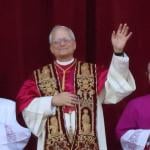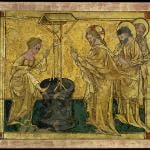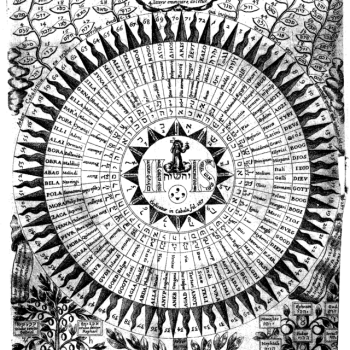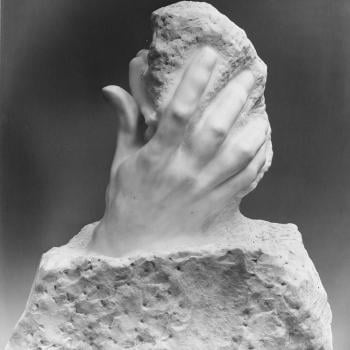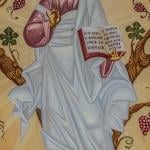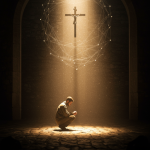
The absolute truth, the truth which can be described as the divine reality from which all things come to be, is one. That is, God is one, indeed, the One. Nonetheless, our knowledge of the absolute truth, of the truth of God, is not as the absolute truth as it is in itself, for that truth infinitely transcends our ability to comprehend it. Our knowledge, our experience of that truth is through various ways which we are able to apprehend it, with each apprehension giving us some representation of the truth which, because it comes from the truth, can be said to be true, even if it is not the absolute truth in itself. What we learn, what we apprehend, is best designated as conventional truth, and as there are many, indeed, an infinite number of ways we can apprehend the absolute truth, it is possible to say there are an infinite number of conventional truths. We have, throughout our existence, many engagements with the truth, engagements which we reflect upon and explore with our intellect, allowing us to present to others (and to ourselves) a representation of that conventional truth through words. “Reality is beyond the scope of intellection. Intellection is said to be the conventional.” [1] Words, therefore, can be said to contain the truth, and so said to be true, but only if we understand the level of truth involved, that is, the truth is conventional in nature. Words, like our minds, cannot comprehend the absolute truth, and therefore the reality of the absolute truth, even if they are can point to and represent it.
How is it possible to apprehend the absolute truth when it lies beyond our comprehension? Through the way the absolute truth, in its eternal simplicity, acts and engages us in its eternity. While the act is one, in the truth itself, for us, it is divided over time and space, so that every moment, every place, has some element of the absolute truth interacting with it, an interaction which allows us to engage the truth and apprehend some notion of the truth. This is what St. Gregory Palamas means when he says we know God through the divine energies, with the energies themselves are one and many. These divine energies, the various actions of God, actions which can be found throughout creation, and even in ourselves present to us truths about God, truths which we know are true, each giving us a way to characterize or name God, and yet each which must not be confused, in and of itself, as being the fullness of the absolute truth (even if every one of them is interconnected with every other one in the absolute truth). This is why it is possible to say, following Didymus the Blind, there are as many truths (about God) as there are as there are subjects who seek after and engage the truth from themselves:
The truth of God has a singular form, for the Savior says, “I am the Truth.” However, it becomes many in those who partake of it. And just as it obtains in the case of knowledge and virtue – we do not say about each knower that he possesses the whole of knowledge, but a certain kind of knowledge, that is, a particular part of it. So as many knowers as there are, so many are that particular parts of knowledge, and as many partakers of the truth there are, even so many – rather, even so many – are the truths; they are as many as those who partake of it. [2]
While some might suggest that this kind of engagement with the truth leads to relativism, it does not, because all conventional truths require a relationship with and a revelation of the absolute truth to be a conventional truth. It is not a truth which we create, with every person creating their own truth, it is, rather, what people apprehend of the greater truth, an apprehension which will differ not only from person to person, but from a person at various stages in their life. Each particular truth complements every other particular truth and come together as one in the absolute truth. Even if they seem to contradict each other, these particular truths find themselves resolved in the absolute truth. Nonetheless, it is important to note that there is potential for our apprehension of the truth to be distorted, to be filtered through some lens which causes us to misperceive the truth and end up holding to some error, or theologically, heresy, which is something relativism does not accept.
This is why it is possible to say there are many paths to God, because, in a way, each person has their own path to God, their own way to engage God and apprehend something of God which no one else has. This is not to say the paths do not cross each other, because in the end, they all merge and connect in some way (which is one of the reasons why we can learn from each other). Not only do they merge, but Christians say they merge and become one in Christ, that the various paths and the apprehensions of the truth point to and find themselves fulfilled in Christ, the expectation of the nations. He is the way, the truth, and the life, and no one can go to the Father except through him. What we believe, then, is that in Christ we find the reconciliation of the world, including then, the reconciliation of all the various conventional truths, a reconciliation made manifest or revealed in the way Christ is both God and human.
Many questions which arise in the conventional sense of the truth can find their answer in him, though in a way which will remain paradoxical, such as the way in and through him, we find the answer to the question of whether or not God can make a stone which God cannot lift or move. We find our answer emerges in light of the incarnation and God’s assumption of human nature. There, we find the answer is both yes and no. Jesus is the God-man, a divine person, so that whatever he does in and through his humanity or his divinity is said to happen to the one who is God. In his humanity, we find there are many stones which Jesus cannot lift, so that in and through him, we find God can and has made stones which God cannot move, but this is because Jesus is God; in his divinity, he remains capable of moving them all. In Jesus, in the incarnation, even opposites come together as one, so that in him, as in God, we can find the coincidence of the opposites. All things, then, and with it, all the truths, and all paths people take to God, find themselves coming together in him. He has taken in all of humanity, and through humanity, all of creation unto himself, so that in and through himself, he hands everything over to the Father. There is nothing outside of him and his scope, which is indeed, is the point of saying he is the way, the truth, and the life, for he is the Logos, from which the logoi of creation flow, and to which the logoi of creation, the various conventional truths of creation, return
[1] Śāntideva, The Bodhisattvacaryāvatāra. Trans. Kate Crosby and Andrew Skilton (Oxford: Oxford University Press, 1995; repr. 1998), 115 [9.2].
[2] Didymus the Blind, Lectures on the Psalms. Trans. Jonathan Douglas Hicks (Downers Grove, IL: InterVarsity Press, 2024), 162.
Stay in touch! Like A Little Bit of Nothing on Facebook.
If you liked what you read, please consider sharing it with your friends and family!
N.B.: While I read comments to moderate them, I rarely respond to them. If I don’t respond to your comment directly, don’t assume I am unthankful for it. I appreciate it. But I want readers to feel free to ask questions, and hopefully, dialogue with each other. I have shared what I wanted to say, though some responses will get a brief reply by me, or, if I find it interesting and something I can engage fully, as the foundation for another post. I have had many posts inspired or improved upon thanks to my readers.


